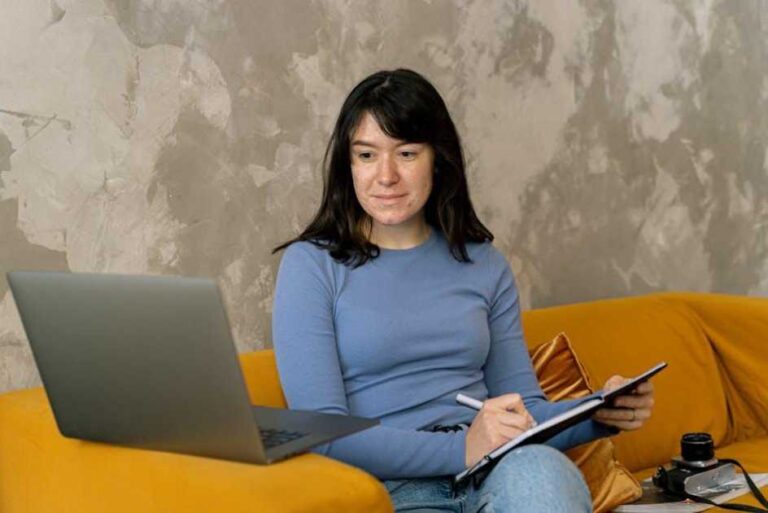As the sun rises over the iconic skyline of Sydney and the vibrant streets of Melbourne come to life, Australia beckons to an ever-growing number of international students.With its world-class universities,stunning landscapes,and rich cultural experiences,the Land Down Under is not just a destination; it’s an possibility for academic and personal growth. However, as prospective students prepare to embark on their educational journey in 2025, understanding the financial aspects of studying and living in Australia becomes paramount. In this article, we will delve into the key costs associated with international education in Australia, from tuition fees to everyday living expenses, equipping you with the knowledge needed to navigate your budget in a contry known for its breathtaking beaches and innovative learning environments. Join us as we unpack the essential components of this important financial landscape, ensuring you’re well-prepared for an enriching adventure in Australia.
Understanding Tuition Fees and Additional expenses for International Students
deciphering the cost structure of tuition fees for international students in Australia is paramount to effective financial planning. Generally, tuition fees vary considerably based on the institution and course of study.For exmaple, fees can range from AUD 20,000 to AUD 45,000 per year for undergraduate programs, while postgraduate courses may demand upwards of AUD 22,000 to AUD 50,000.Factors influencing these costs include the institution’s reputation,course length,and level of specialization. Below is a quick overview of expected tuition fees:
| Program Level | Estimated Annual Fees (AUD) |
|---|---|
| Undergraduate | 20,000 – 45,000 |
| Postgraduate | 22,000 – 50,000 |
| Vocational Education Training (VET) | 10,000 – 20,000 |
Aside from tuition, international students must also be prepared for additional expenses that can quickly accumulate.Living costs, including accommodation, food, transportation, and health insurance, usually range from AUD 19,000 to AUD 27,000 annually. Students should also keep in mind the following expenses which can impact their overall budget:
- Accommodation: AUD 1,500 - AUD 2,500 per month
- Utilities and Internet: AUD 200 – AUD 300 per month
- Groceries: AUD 80 – AUD 100 per week
- Health Insurance: Typically AUD 500 – AUD 600 annually
Navigating Accommodation Options: Cost-effective Choices for Student Living
Finding suitable and affordable accommodation is crucial for international students navigating their new life in Australia. Numerous options are available that cater to different budgets, preferences, and lifestyles. Whether you’re looking for a quiet place to study or a vibrant environment to socialize, you can choose from:
- University Halls of Residence: Ofen the moast convenient choice, these provide easy access to campus facilities and a community of fellow students.
- Shared Apartments: Renting a room with roommates can significantly reduce living costs while allowing for a more independent lifestyle.
- Homestays: Experience Australian culture firsthand while staying with a local family, which can also help streamline the transition to a new city.
- Private Rentals: for those seeking more freedom, consider leasing a flat or apartment, although this may require a higher budget.
When budgeting for accommodation, consider factors such as utility costs, location, and proximity to transportation options. Below is a simple overview of average monthly living expenses for different types of accommodation:
| Accommodation Type | Average Monthly cost (AUD) |
|---|---|
| university Halls | $1,200 – $1,500 |
| Shared Apartment | $800 - $1,200 |
| Homestay | $1,000 – $1,300 |
| Private Rental | $1,500 – $2,500 |
budgeting for Everyday Life in Australia: Essential Expenses to Consider
In recent years, international students in Australia have found that managing their finances requires careful planning and consideration of several key expenses. From accommodation to food, it’s crucial to account for various factors that impact your budget. Consider the following essential expenses that you should integrate into your financial planning:
- Accommodation: Rent is typically the largest expense, whether you choose to live on-campus or in shared housing.
- Food: Grocery bills and dining out can vary, so it’s wise to create a meal plan.
- Transportation: Public transport is affordable, but consider monthly passes for savings.
- utilities: Electricity, gas, and internet can add up, so keep these regular costs in mind.
- Health Insurance: Overseas Student Health Cover (OSHC) is mandatory and should be budgeted accordingly.
To give you a clearer understanding of how these expenses can accumulate, here’s a simple breakdown of an average monthly budget for an international student:
| Expense Category | Estimated Monthly Cost (AUD) |
|---|---|
| Accommodation | $800 |
| Food | $400 |
| Transportation | $150 |
| Utilities | $200 |
| Health Insurance | $70 |
| Total | $1,720 |
Maximizing Your Experience: Tips for Financial Management and Support Services
To effectively manage your finances while studying in Australia, it’s essential to create a detailed budget that encompasses both your educational expenses and day-to-day living costs. Start by listing fixed expenses such as tuition fees, accommodation, and insurance. Follow this up with variable expenses, which can include groceries, transport, and entertainment. Utilize budgeting apps or spreadsheets to track your spending and regularly compare your actual expenses against your planned budget. This approach will help you identify any areas where you can cut back and save more.
along with proper budgeting, leverage the support services available to international students. many universities offer financial counseling,which can provide personalized advice tailored to your situation. Additionally,familiarize yourself with local student discounts,which can significantly reduce costs for transportation,dining,and activities. Consider engaging with fellow students in sharing resources, such as textbooks or accommodation, to further stretch your budget. By being proactive and resourceful, you can maximize your financial experience while enjoying your time in Australia.
Q&A
Q&A:
Q1: What are the average tuition fees for international students in Australia for 2025?
A1: In 2025, international students can expect to pay between AUD 20,000 and AUD 50,000 per year in tuition fees, depending on their chosen course and institution. Courses in fields like engineering and medicine typically come with higher fees, while arts and humanities programs may be more affordable.
Q2: Are there any additional costs besides tuition that international students should consider?
A2: Absolutely! Along with tuition fees, international students should budget for student services and amenities fees, which can range from AUD 200 to AUD 700 annually. Moreover, consider the cost of textbooks and materials, which can also add an estimated AUD 500 to AUD 1,500 per year depending on your course.
Q3: What is the estimated cost of living for international students in Australia in 2025?
A3: The cost of living can vary depending on location, but on average, international students should budget between AUD 20,000 and AUD 30,000 annually for living expenses. This includes accommodation, food, transportation, and incidentals. Major cities like Sydney and Melbourne may lean toward the upper end of this range, while regional areas can be more affordable.
Q4: how much should students expect to pay for accommodation?
A4: Accommodation costs can vary widely. On-campus housing may cost between AUD 110 and AUD 400 per week, while renting a shared apartment off-campus typically ranges from AUD 80 to AUD 250 per week. It’s best to research various options to find something that fits both your budget and lifestyle.
Q5: Is health insurance a requirement for international students?
A5: Yes, all international students in Australia must have Overseas Student Health Cover (OSHC) for the duration of their stay. The cost for OSHC typically ranges from AUD 500 to AUD 700 per year,depending on the provider and level of coverage chosen.
Q6: How can students manage their expenses effectively while studying in Australia?
A6: students can manage expenses by creating a budget that accounts for both fixed and variable costs. Seeking part-time employment is also a great way to supplement income while studying—international students can work up to 40 hours per fortnight during the semester and unlimited hours during breaks.
Q7: are there financial assistance options available for international students in Australia?
A7: Yes, various scholarships and financial aid options are available for international students. Many australian universities offer merit-based scholarships that can significantly reduce tuition fees. Additionally, students should explore government-funded scholarships in their home countries or international organizations that support study abroad programs.
Q8: What expenses should students set aside for entertainment and leisure?
A8: It’s wise to allocate around AUD 50 to AUD 100 per week for entertainment and leisure activities, which can include dining out, movie outings, or exploring local attractions. Australia boasts a wide array of free events and public spaces, which can definitely help students enjoy their time without breaking the bank.
Q9: What’s the potential impact of the cost of living on the decision to study in Australia?
A9: The cost of living is a crucial factor for many international students when choosing where to study. It’s important to weigh living expenses against potential career opportunities and the quality of education in australia, as the long-term benefits of studying in a globally recognized education system may outweigh the initial financial burden.Q10: are there any tips for students to save money while living in Australia?
A10: Definitely! To save money, students can shop at local markets, cook meals at home, use public transport, and take advantage of student discounts available at various retailers and attractions. Planning outings during free promotional days can also keep entertainment costs low, ensuring students enjoy their time without overspending.
Wrapping Up
As we wrap up our exploration of the costs associated with studying and living in Australia in 2025, it’s clear that the journey as an international student is as enriching as it is challenging. From tuition fees that reflect the high standard of education to the varied expenses of day-to-day life in vibrant cities,planning and budgeting become essential tools for success.
Australia’s unique blend of academic rigor and cultural diversity offers countless opportunities, but being well-informed about financial commitments is crucial for making the most of your overseas experience. By understanding the potential costs and preparing accordingly, you can focus less on worries and more on opportunities—immersing yourself in vibrant communities, exploring breathtaking landscapes, and forging lifelong connections.
As you embark on this exciting adventure,remember that investment in education is not just a financial one; it’s a stepping stone toward your future. Equip yourself with knowledge, embrace the challenges, and step confidently into the rich tapestry of life in Australia. Your journey is just beginning—make the most of it!


















